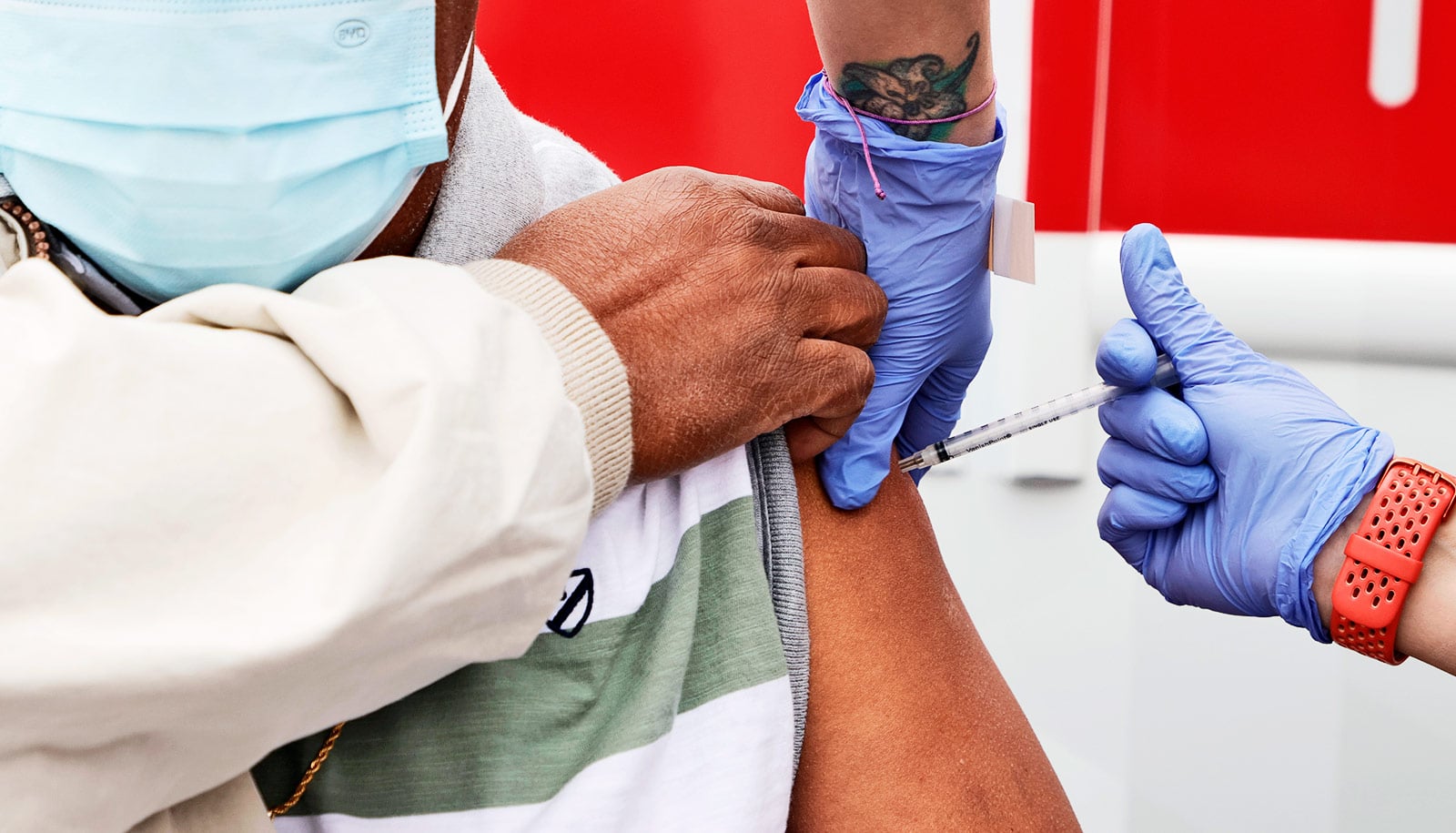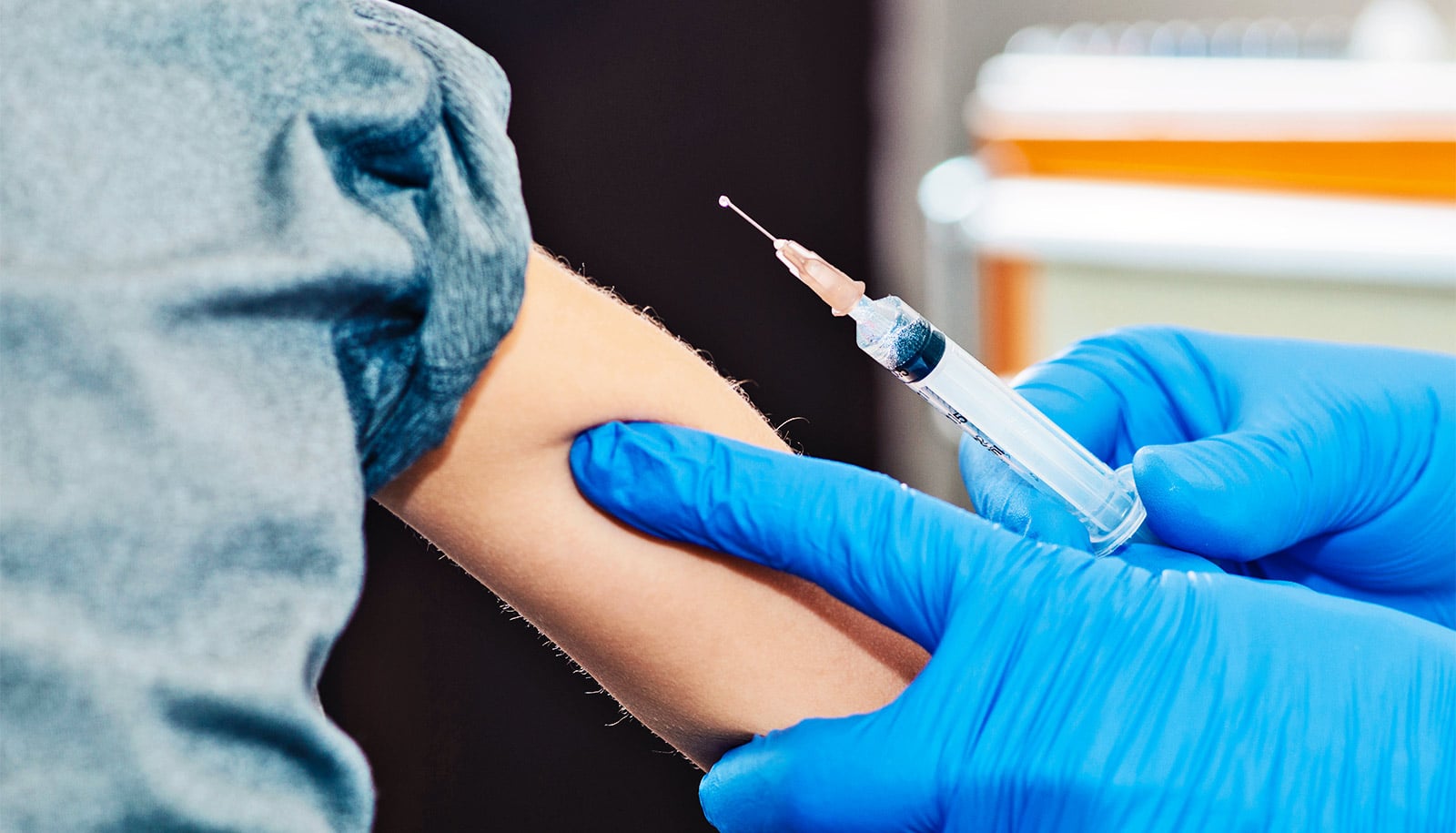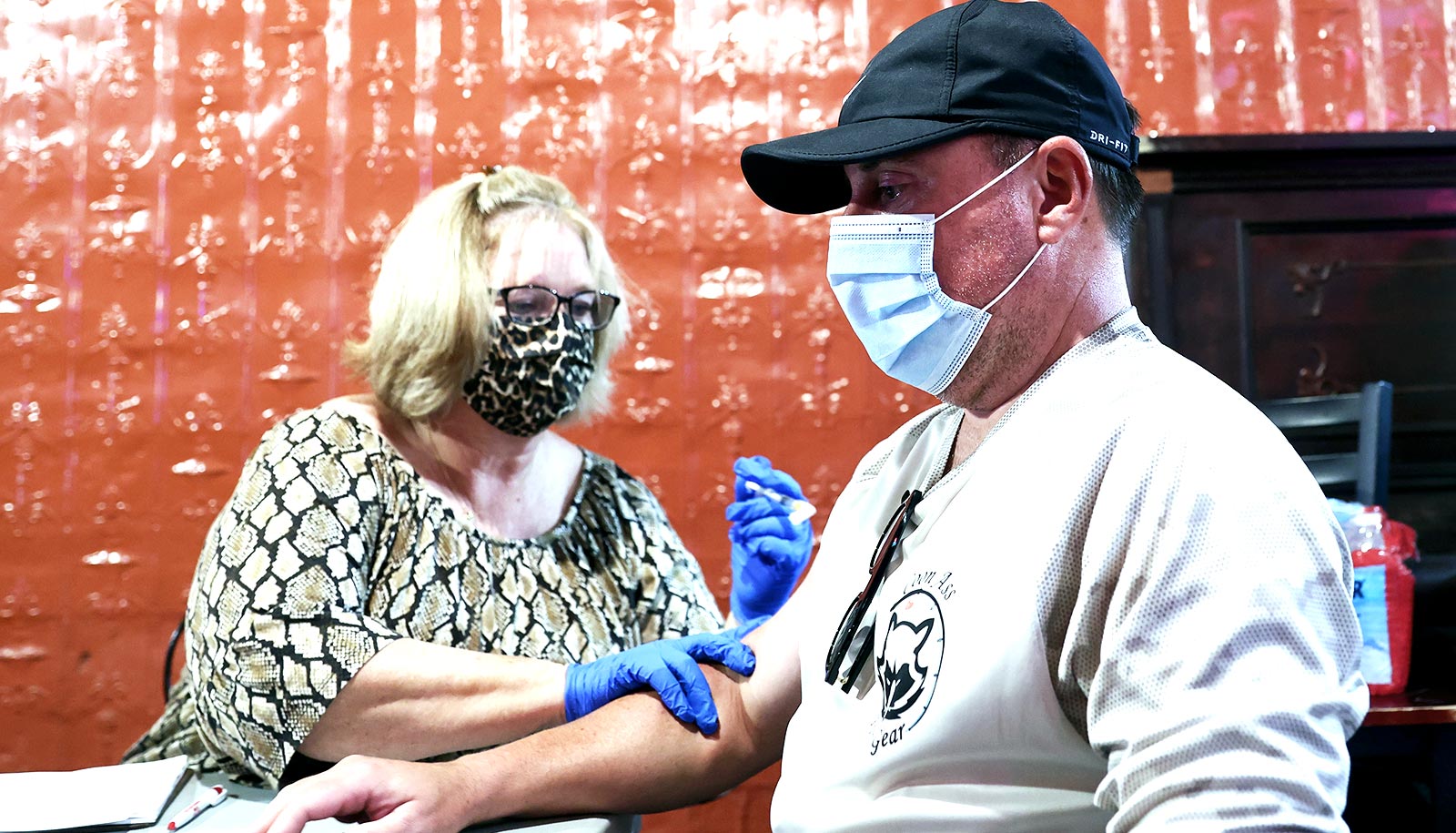
"The difference in vaccine platform technology should not impair the ability of manufacturers to respond to new strains of the virus. If anything, the mRNA technology provides a platform for faster response," says Jennifer Pancorbo. "Unfortunately, responding to yearly changes in the dominant virus strain faces other challenges, in addition to manufacturing capacity." (Credit: Ethan Miller/Getty Images )
Can we modify COVID vaccines to tackle new variants?
How easy will it be to modify COVID-19 vaccines to tackle new variants? An expert brings you up to speed on the challenges of staying one step ahead.
How quickly can we modify COVID-19 vaccines to tackle any new variants that arise? Jennifer Pancorbo has some answers.
The ongoing battles with COVID variants Delta and Omicron highlight just how quickly viruses can mutate, and what that can mean for public health.
Pancorbo is a vaccine manufacturing expert and director of industry programs and research at North Carolina State University’s Biomanufacturing Training and Education Center.
Here, she explains modifying the COVID-19 vaccine and clarifies why it’s becoming so difficult for people to obtain rapid test kits for detecting COVID-19:
The post Can we modify COVID vaccines to tackle new variants? appeared first on Futurity .
I know you have a lot of familiarity with influenza vaccine manufacturing, and the fact that each year the flu vaccine is modified to account for whichever flu strains experts think will be prevalent in the coming year. However, I also know that the COVID-19 vaccines are mRNA vaccines and adenovirus vaccines, but the flu vaccines are not. How difficult would it be for COVID-19 vaccine manufacturers to modify their vaccines to account for new strains of SARS-CoV-2, such as the Omicron variant?
The difference in vaccine platform technology should not impair the ability of manufacturers to respond to new strains of the virus. If anything, the mRNA technology provides a platform for faster response. Unfortunately, responding to yearly changes in the dominant virus strain faces other challenges, in addition to manufacturing capacity.
Can you explain what those other challenges are?
For one there is a very well established worldwide network for influenza virus surveillance. There is no equivalent for COVID-19. For influenza, there are centers around the world that collect data on strain circulation; experts then use that data to make an educated guess as to which strains will be most likely to present major health threats to the public; and those strains are incorporated into the seasonal vaccine formulation.
In the case of COVID-19, we do not have that rigorous surveillance in place yet. Therefore anticipating a formulation becomes a challenge.
In addition, there is an intricate supply chain network in place for influenza vaccine manufacturing components that gears up months before manufacturing even begins and uses forecasting from previous years to guess demand. Without those systems in place, responding quickly to a new coronavirus strain seems unlikely.
And then there is the risk. The decision about which formulation to manufacture for influenza each year is a calculated risk, based on many years of experience. Without the backup of experience, companies may be less willing to accept the risk for manufacturing a new COVID-19 vaccine that targets a particular strain.
When do you think we might see new COVID-19 vaccines that account for new strains of SARS-CoV-2?
It is difficult to predict. The virus is mutating quite fast and new strains seem to pop up daily. The surveillance is not there yet. And testing needs to gear up in support of such surveillance, as we know we are in a testing crisis now that may slow all those systems down even further.
At this time, our best alternative is to slow down the spread of COVID-19 so that the virus has fewer hosts, which in turn limits its ability to mutate into new strains.
Would any new vaccines effectively be single-dose boosters, or might they also require two shots, as the Pfizer and Moderna vaccines did when people were first vaccinated?
It would depend on the efficacy of the new vaccine and the risk posed by the new strain. For example, if the new strain does not cause much mortality we can afford a reduced efficacy; but otherwise, we would need to elicit a higher immune response, which may result in the need for two doses again.
How could the development of COVID-19 vaccines that account for new variants affect our ability to vaccinate people around the world who have not yet been vaccinated?
By regulation, a facility must clear a previous product from the manufacturing floor before they initiate production of a new one. Therefore, to manufacture a new COVID-19 vaccine they must stop manufacturing the previous one; that may result in less availability of old vaccine formulations for those who are not yet vaccinated.
I also wanted to ask a couple questions about rapid tests for COVID-19. First off, how do they work—and how effective are they at detecting COVID-19?
Most rapid tests are similar in principle to a pregnancy test; they detect the presence of an analyte in the sample, but for detection to occur a minimum threshold must be met. Rapid tests are as reliable as any pregnancy test, if you test too early then you do not have enough analyte present in the sample for a positive; that does not mean the test is bad or inaccurate, it only means it has a minimum limit of detection that must be met for it to work.
If you run a rapid test and get a negative result, you can conclude that at the time of testing you do not have enough viral load for detection either because you are negative or because your infection has not progressed enough yet.
Is it possible to have a false negative? Yes, but that reason is less likely than the two I already mentioned.
Why are people having such a hard time getting their hands on rapid tests right now?
Several reasons: supply chain limitations, limited workforce due to their own or a family member’s infection with COVID, extensive testing due to the new spike of the Omicron strain, and lack of planning by our local and federal government, which resulted in less investment in the approval and development of over-the-counter COVID-19 tests.
Share this article:
This article uses material from the Futurity article, and is licenced under a CC BY-SA 4.0 International License. Images, videos and audio are available under their respective licenses.


